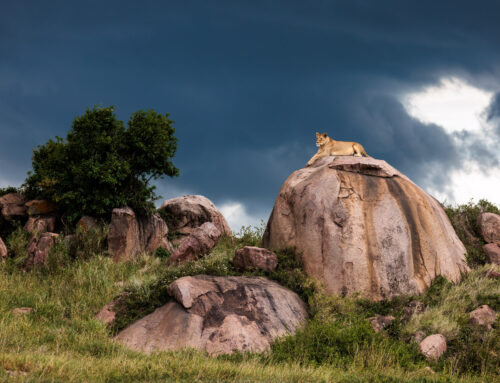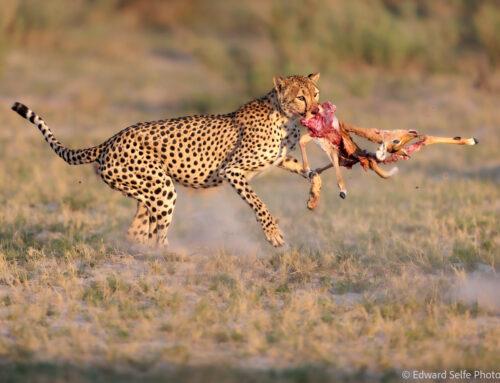During the last couple of years, I really promoted the Emerald Season. Not only is it a pity that this special period of the year had not been busy for me in the past, but I wanted to share it with guests. Many agents are too focused on the supposed “best” time to visit certain areas and it’s nice to break the preconceptions. I have now run 3 Emerald Season Safaris in the Luangwa this year, and this report covers the 3rd which ran from 13-21 May.
Next year, I will be running a Luangwa Emerald Season Safari from 29 April – 7 May and I am also planning an variation using Nkwali Camp and Lion Camp, and also an Emerald Lower Zambezi tour too.
Back to the Luangwa; this trip was made up of one repeat guest (who had seen Zambia in the dry of September and wanted to see the contrast of Emerald Season) and 3 others who have travelled widely but not to Zambia. It was a great group, with lots of fun, laughter and a good blend of different, but complementary, interests.
Several of the guests were keen on macro photos and all enjoyed birding and looking for the best lighting opportunities….and action is always a priority for any photo safari: animals doing interesting things like hunting, feeding, chasing, mating, interacting and moving are always more rewarding than simple portraits.
As before, here is an image-and-caption based report of the trip, with some images of the group on safari in between. You can find more information from each day on my Instagram Stories Highlights.
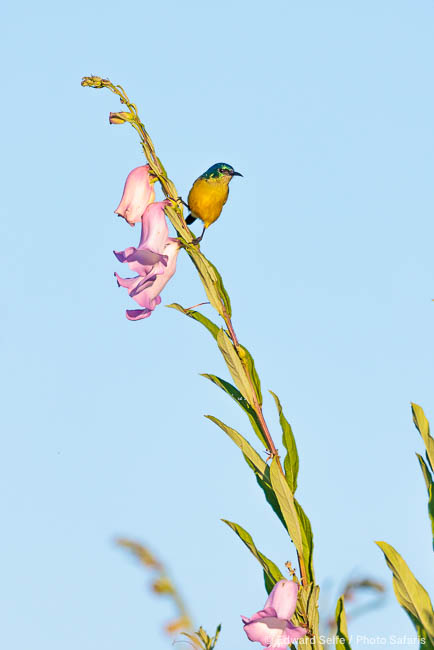
Taking it easy on our first afternoon, we drove through a large area of tall Sesamum shrubs. They were flowering and we could hear the sound of sunbirds foraging on the flower heads. We waited near the best lit flowers in time for a female Collared Sunbird to visit. The male, who has brighter iridescence, fed only on the shrubs in the shade!
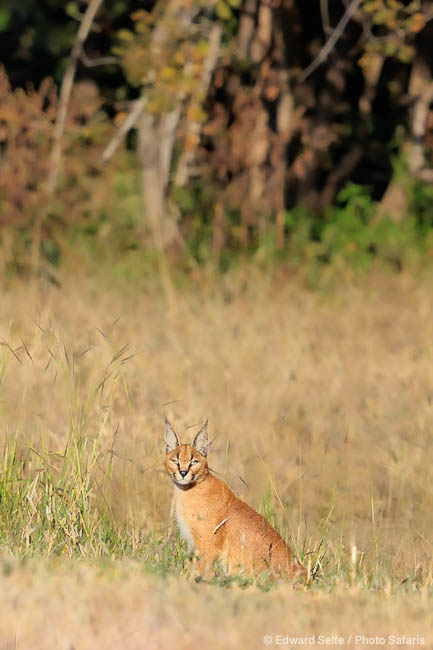
The following morning gave me only my second ever sighting of a caracal. They are known from the Luangwa Valley, but there have been very few sightings in the 15 years that I have been here so I was thrilled to round the corner and find one sitting at the side of the road. It was 40-50m from us and I weighed up the options of trying to approach (best case, we get better images; worst case, it runs away) or staying put (best case, we have longer to watch it; worst case, no worse than currently!) and decided to sit still. It was focused on something on the opposite side of the road so we watched to see if it would cross. It did eventually, and then melted into the thickets — gone!
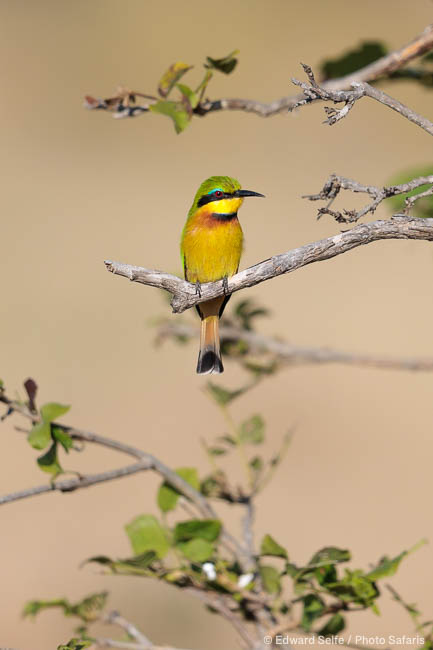
Sometimes the light, the setting and the background on a familiar subject add up to give a special effect on an image. I really liked this Little Bee-eater in its fawn-coloured surroundings.
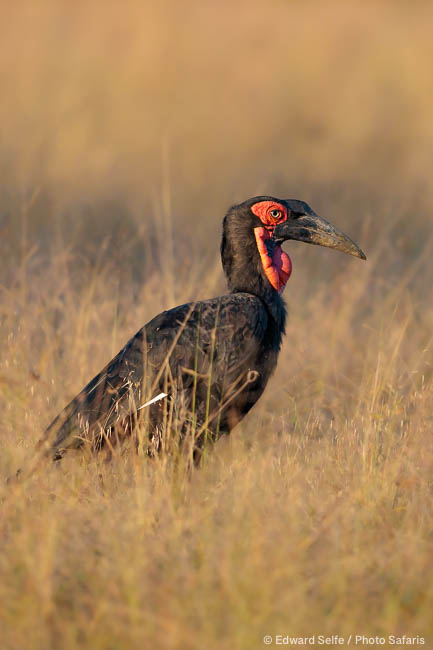
We spent the afternoon with a family of 3 Southern Ground Hornbills which were foraging in the grassland. We trailed them, hoping one would flush a snake or a large lizard, but the largest prey item was a grasshopper which quickly disappeared.
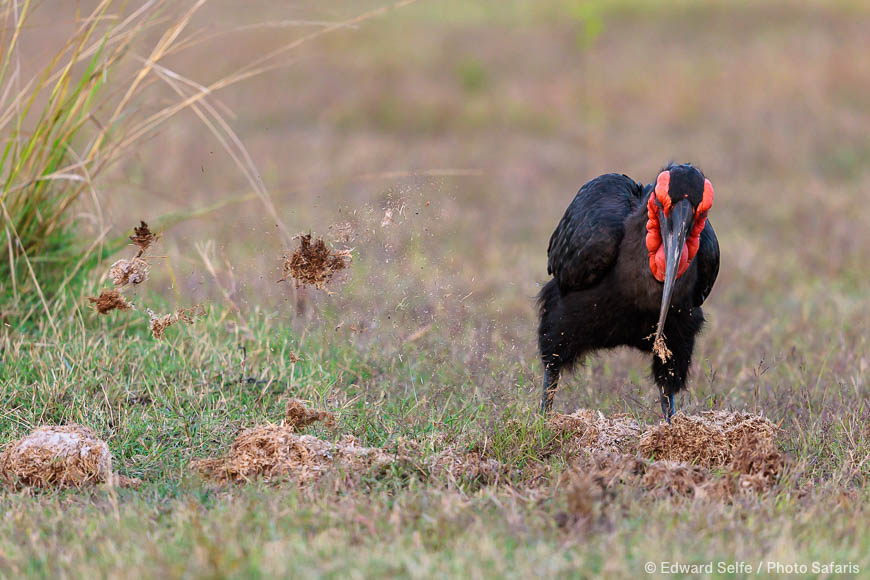
With relatively small, low-to-the-ground subjects such as these birds, I tend to keep a bit further back from the subject, giving everyone a lower apparent angle of view, even if it means they must crop some of the images to increase the size of the subject in the frame.
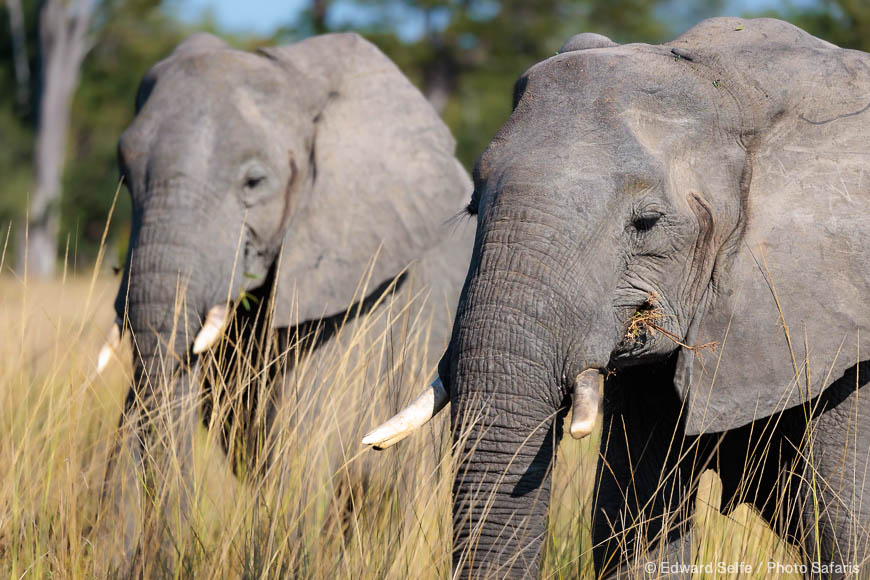
No need for that low-angle technique with these elephants, which emerged slowly from the woodland to gather salt from an area of sandy soil….
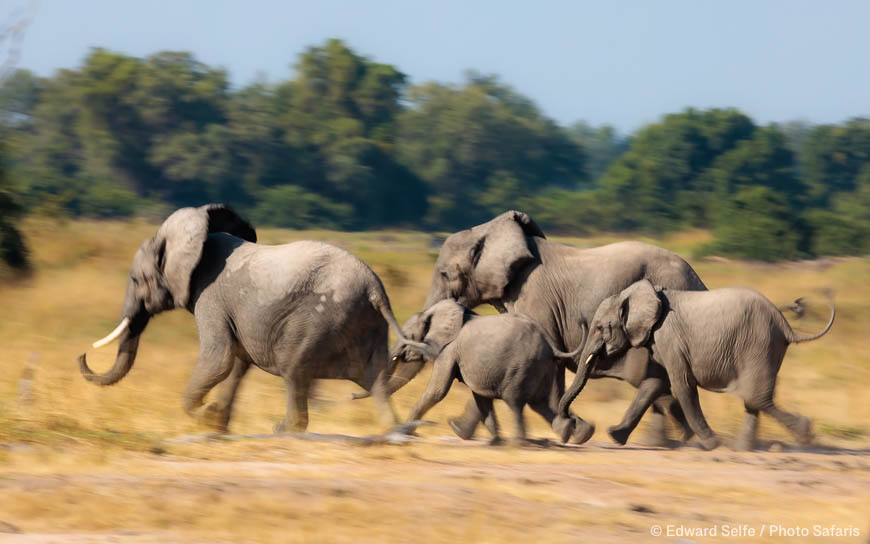
…but while gathering salt, they were spooked by a Kudu which tripped on arrival at the lick! I switched to my motion panning mode and captured a much more artistic image than I could have done if I’d simply frozen the movement. Settings: Tv Mode – 1/30sec – f22 – ISO 100.
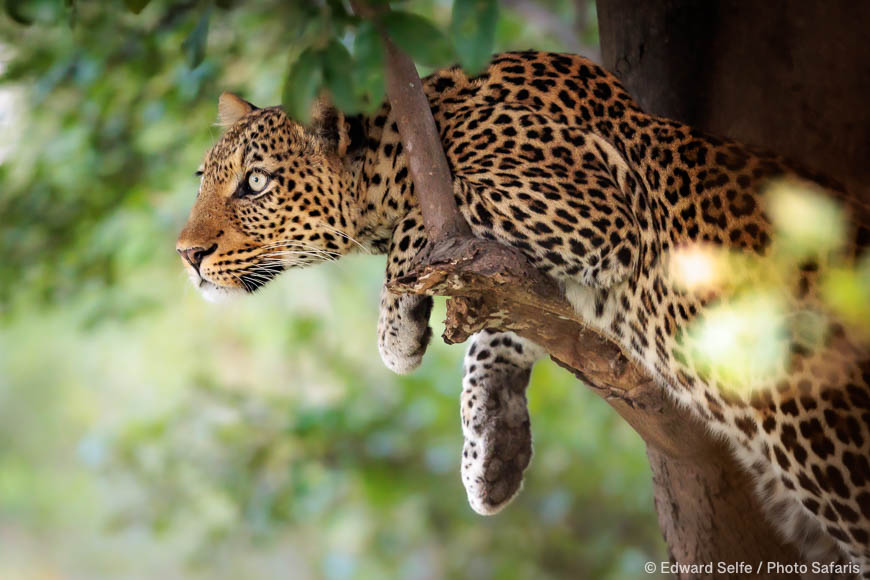
A leopard near Nkwali has a favourite tree. She’s not there every day, but when she’s in that area, she often chooses it. It’s a Natal Mahogany so we have named her Msikisi, the chiNyanja name for that tree. She was sleeping when we first arrived, but soon came down and hung herself over a long branch and scanned the nearby plains for a hunting target. As the light dropped, she descended and put together a very skilled hunt, aimed towards a young waterbuck calf amongst the herd on the edge of the plain. She used a gully to get close to them, hunting from downwind, but someone saw her, squeaked the alarm and they drifted away from the edge.
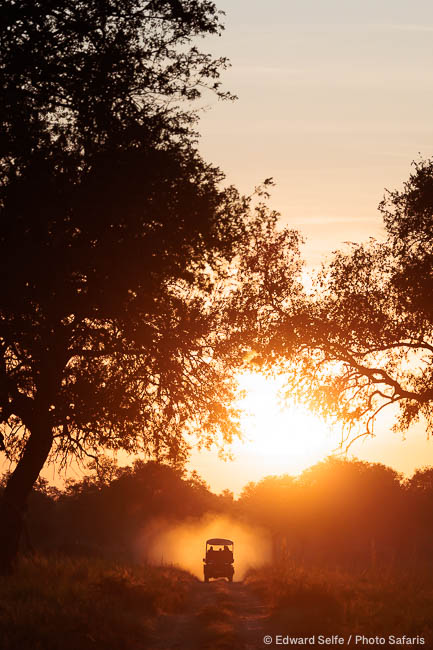
Early dry season light, plus the dust, creates amazing effects.
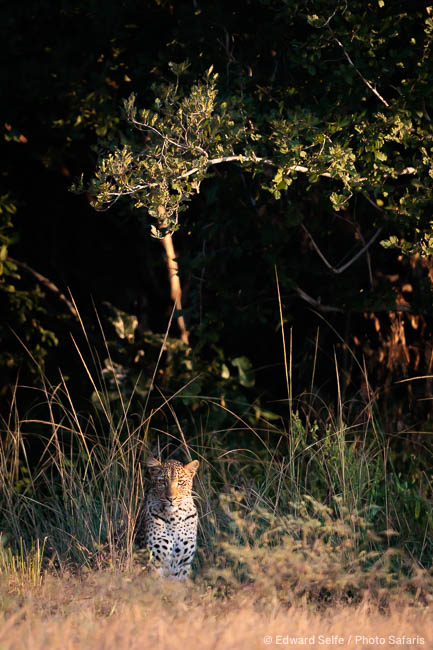
The very next morning, I drove to a large plain looking for wild dogs. When we arrived, the antelope were running and all looked very spooked. I was pretty sure we were about to find wild dogs, given that those are the anti-predator behaviours that antelope employ towards dogs, but in fact, we located a young leopard and her mother.
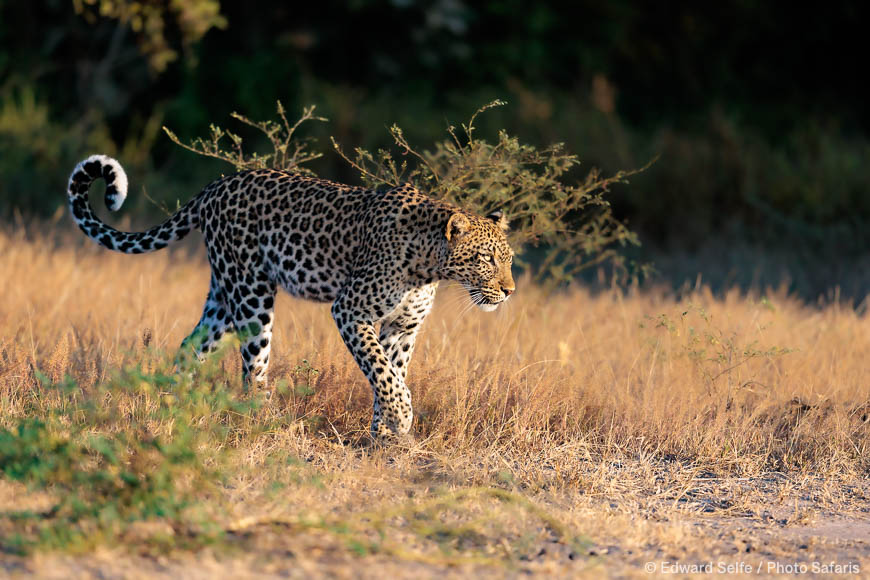
I think that the adult had just made an attempt to catch one of the antelope on the edge of the plain, ambushing from the thickets, but had missed. Upon failure, she would have retreated rapidly in to the thickets to avoid causing any more disturbance and jeopardising future hunting efforts. Most of the antelope probably never saw her but ran off when the target animal was spooked by the attack.
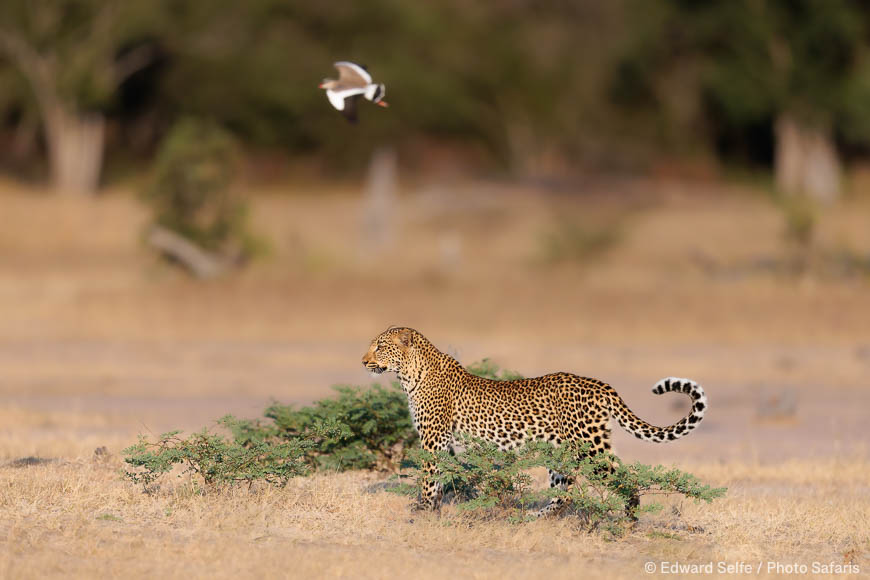
We spent two hours with them as they crossed the plain (not together but separated by 5 minutes) and were mobbed by Lapwings.
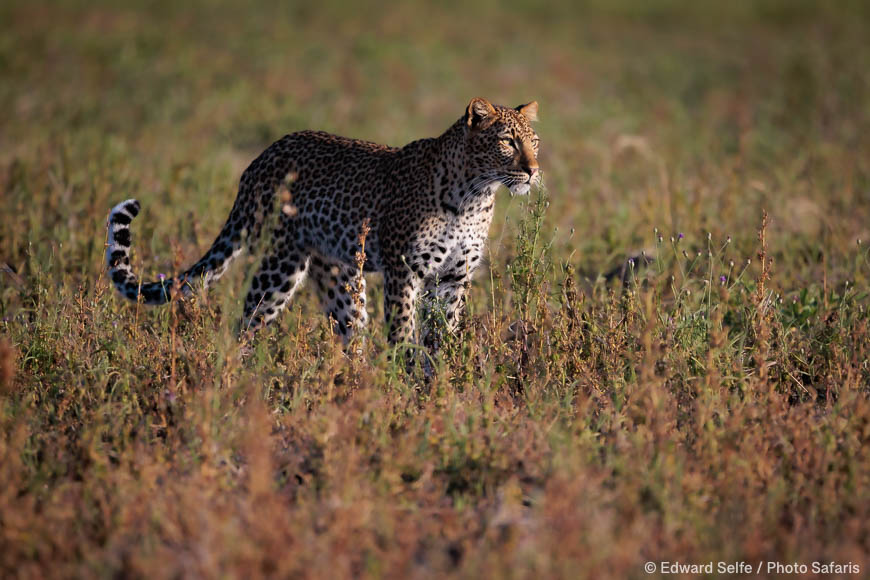
With so much time, we were able to set up backlit and sidelit shots as well.
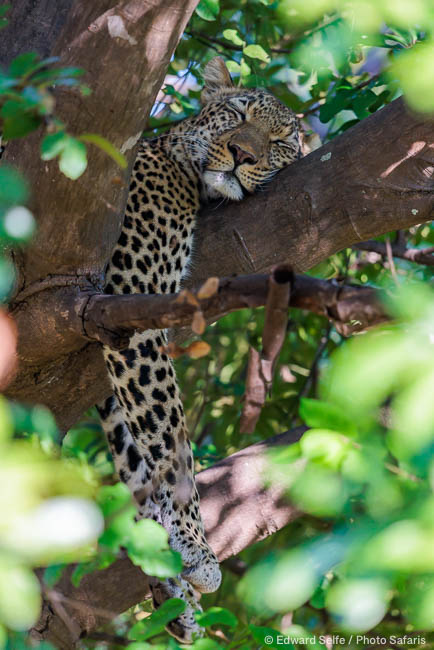
Guess what!? Msikizi was back in her tree again that afternoon! I saw her moving along the river bank from Nkwali Camp so we knew where to start in the afternoon.
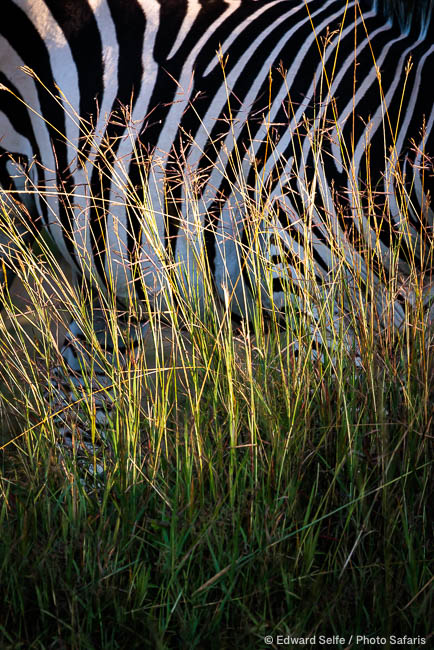
While she was dozing, we entertained ourselves with shooting zebras (one of my favourite shots of the trip)…..
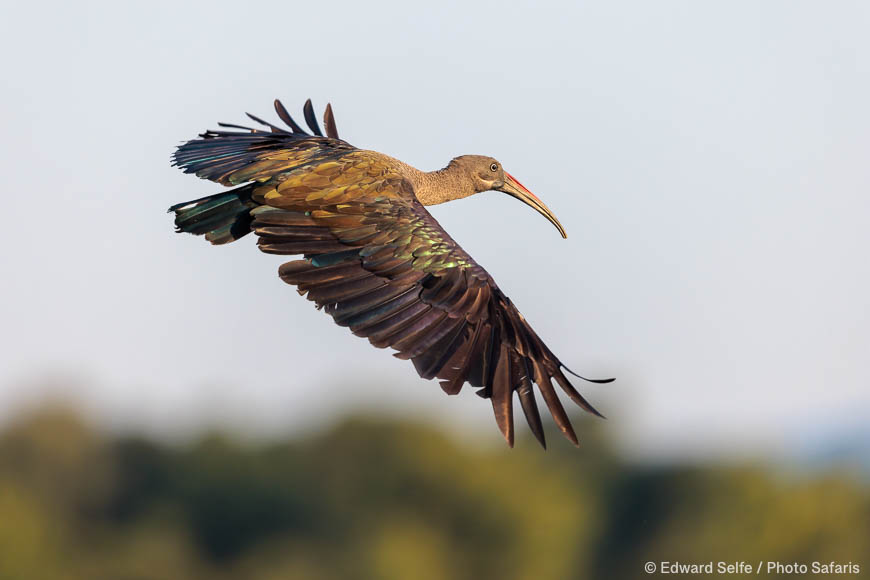
….and Hadeda Ibis which have a surprising iridescent patch on the wing.
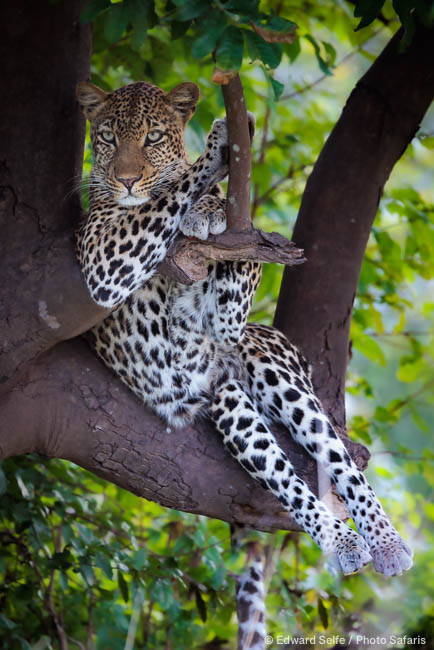
Retunring to Msikisi, we found her in her armchair!
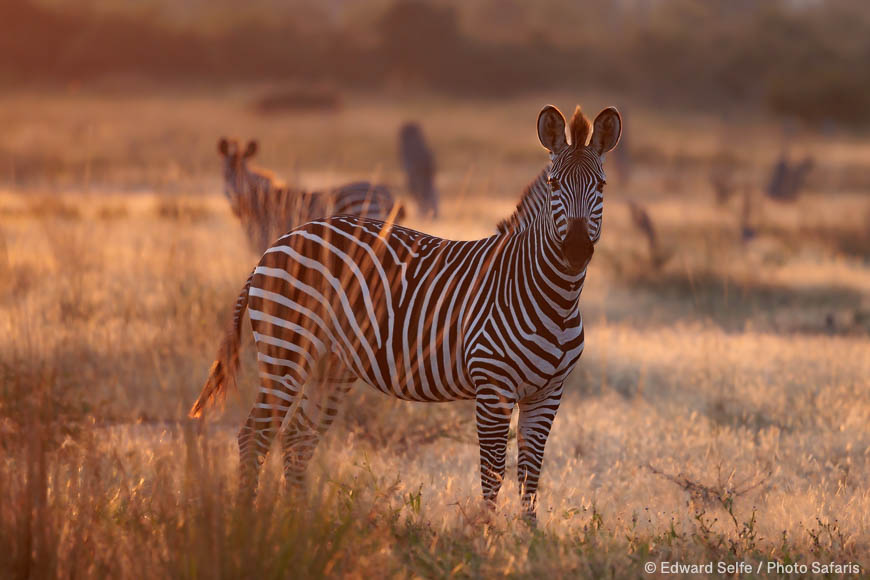
The next day, we were moving camp so we drove further to look for the wild dogs in the open plains again. No sign of wild dogs but who could complain about light like this?
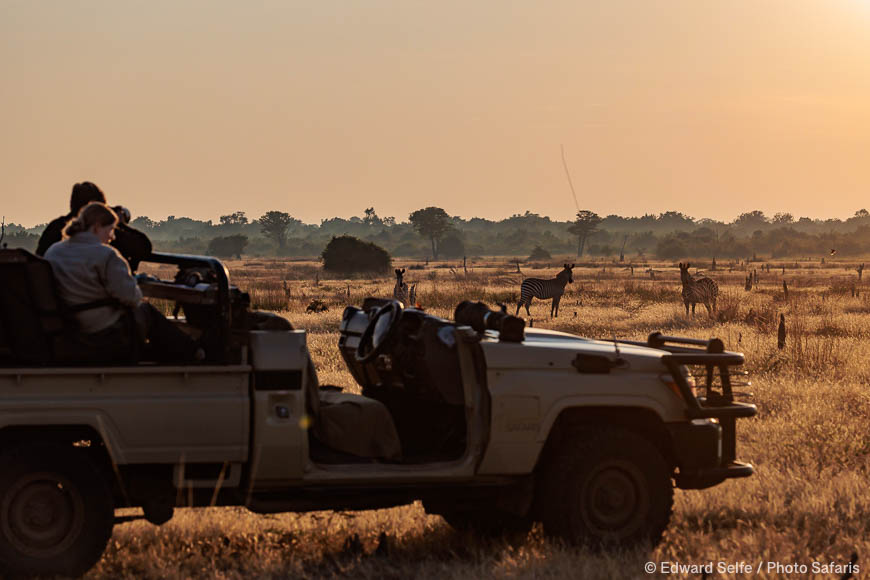
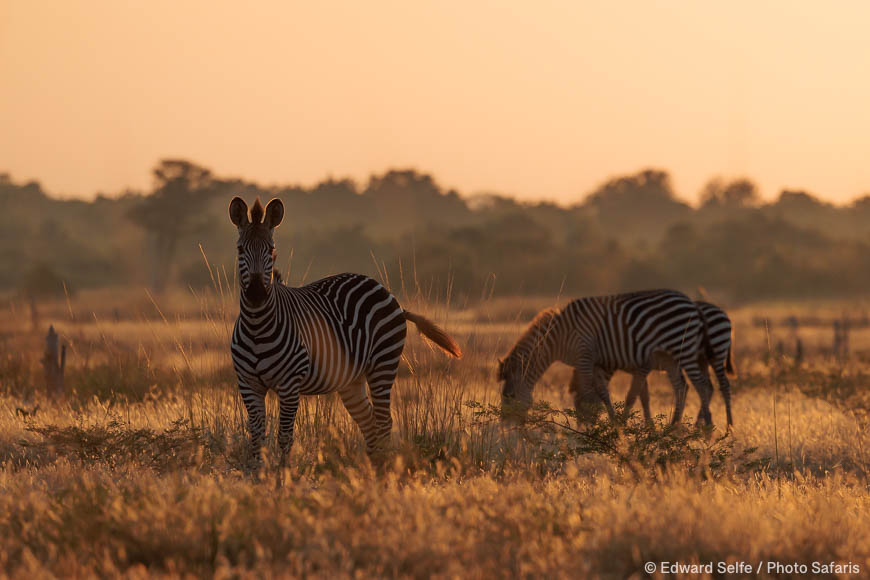
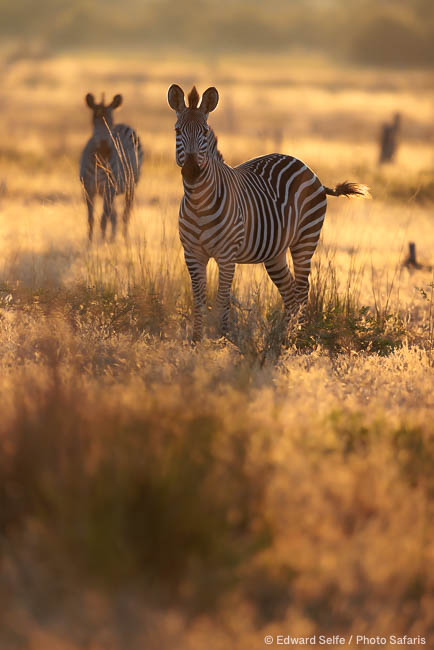
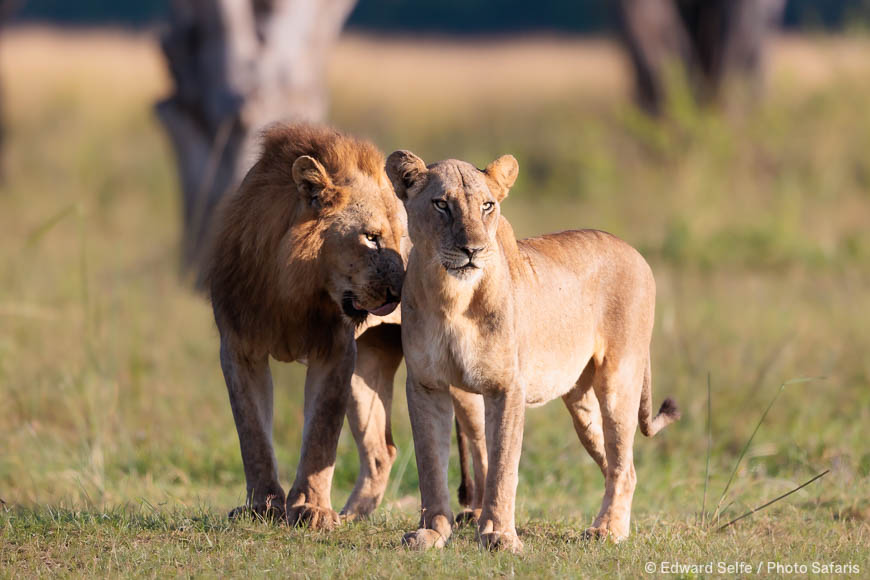
Later that morning, I met a guide who told me that he had seen lions mating nearby. We drove to search fro them and found them, fortunately for us, up and about and still courting.
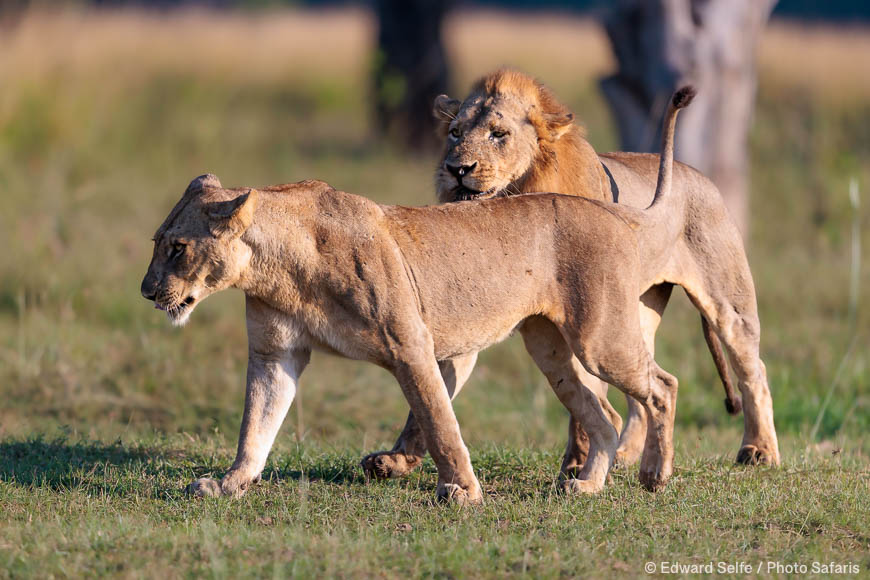
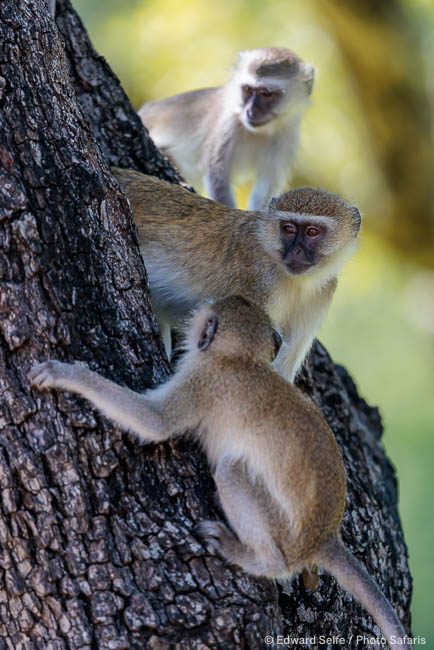
We spent most of the morning with the lions until they crashed out in the shade. We moved on towards camp, stopping for coffee and monkeys along the way.
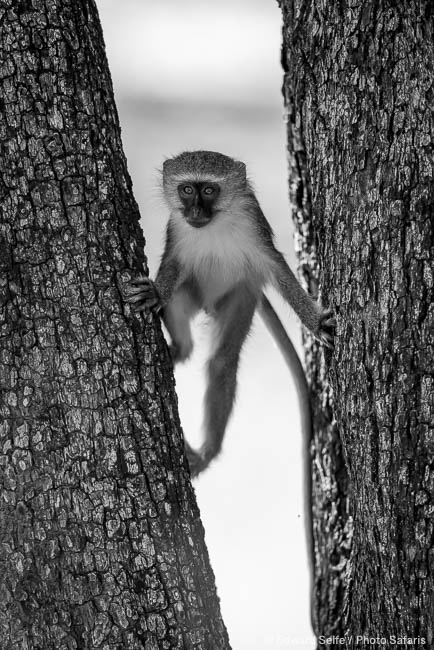
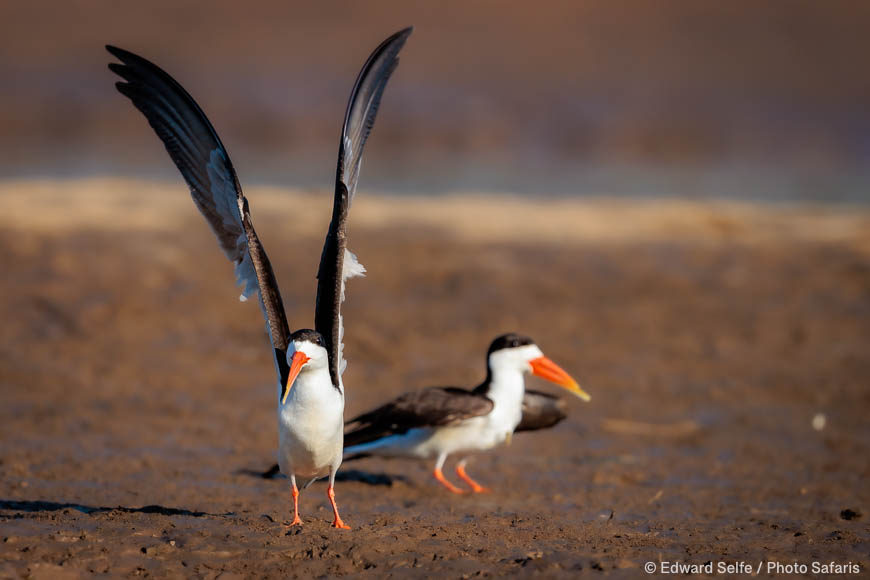
On the boat heading towards our first afternoon safari from Luangwa River Camp, we passed some newly-exposed sandbars which had roughly 10 African Skimmers resting on them. They descend into the Valleys as soon as the sandbars start to show through so that they have the longest breeding and nesting window possible before the islands join to the mainland, or the water rises again.
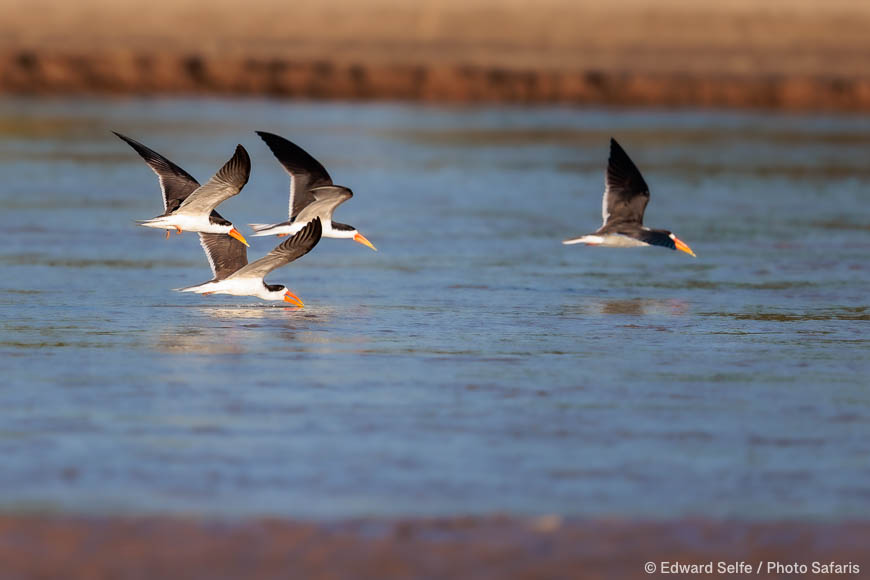
We spent almost an hour with them as they flew around, skimming the surface of the water occasionally, and battled over the best areas for nesting.
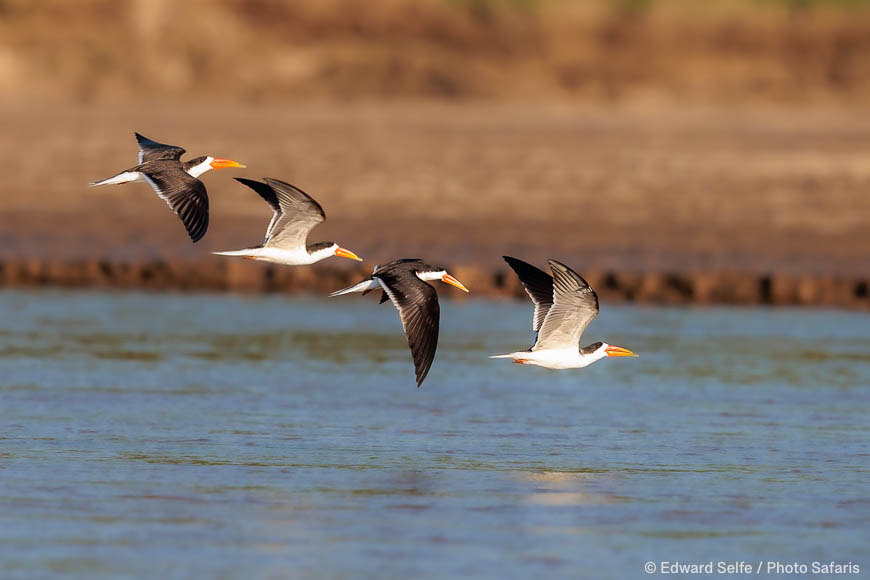
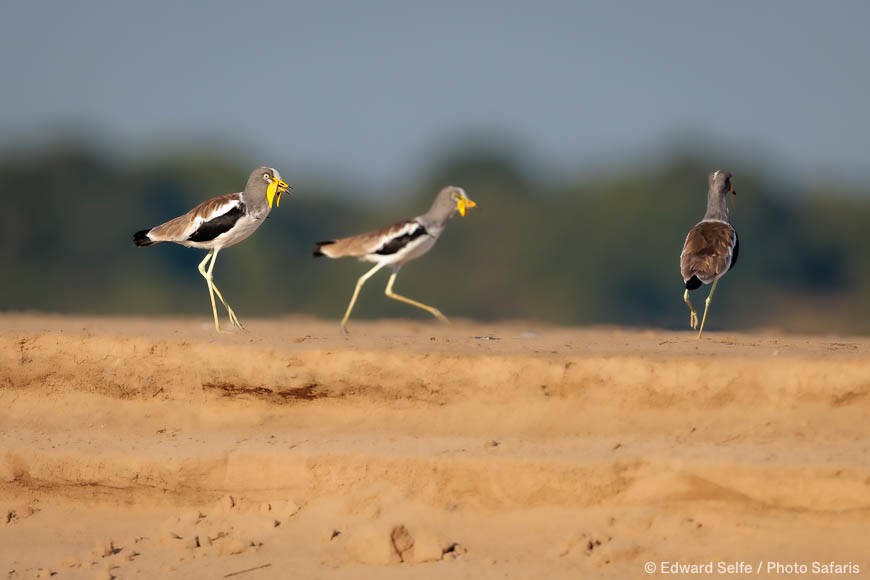
Nearby White-crowned Lapwings were not sure whether it was us or the Skimmers who was more annoying.
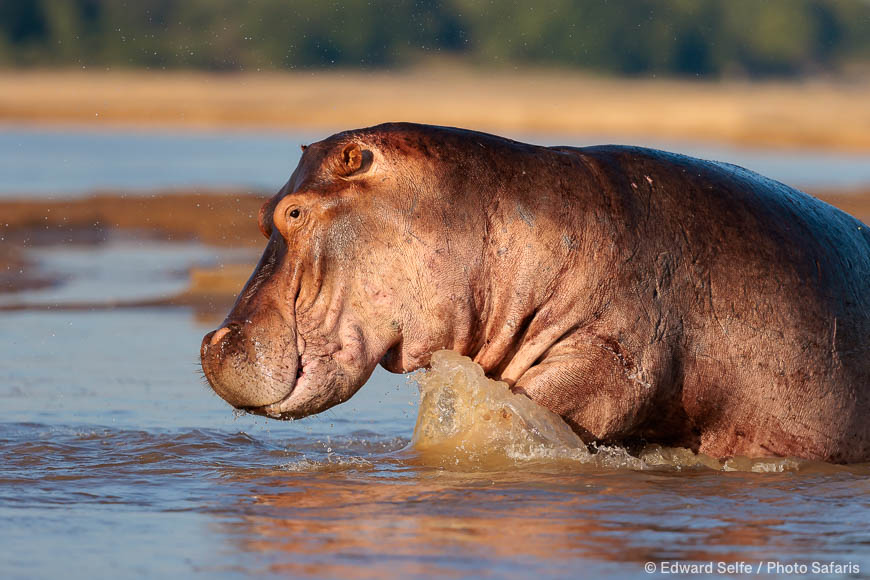
As if a reminder of our alien nature as a boat in the Luangwa River, a large hippo bull rose up from the shallows and glowered at us. I missed the best shots (keeping my head down to avoid being in the way of others’ shots) but managed to get this image as he turned and moved off.
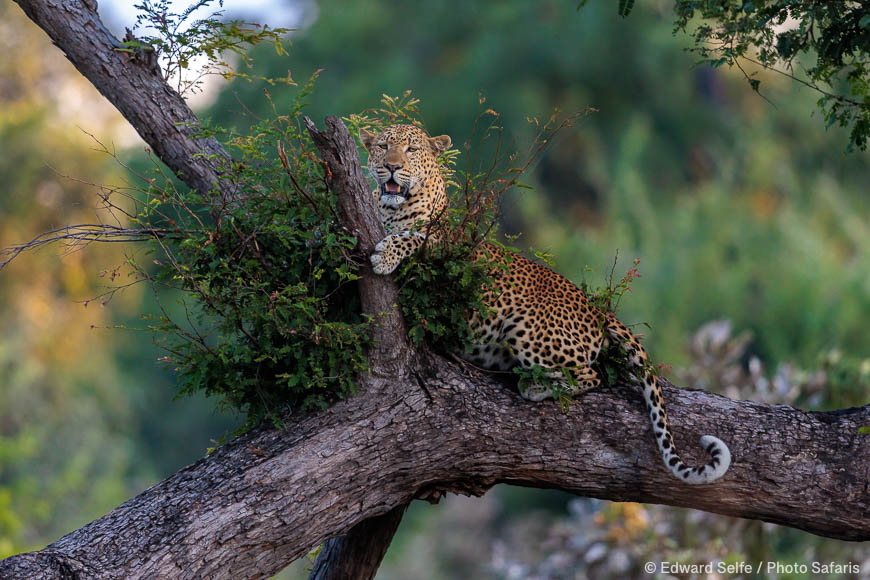
We finished off with the Skimmers and headed to the dock to spend the last part of the evening in the vehicle. It turned out to be a very good decision as, no more than 500m from the harbour, we found this big male lying along a fallen tree. He had eaten and was panting and digesting his meal. We positioned so the soft greens of the trees behind became our background and waited for him to rouse.
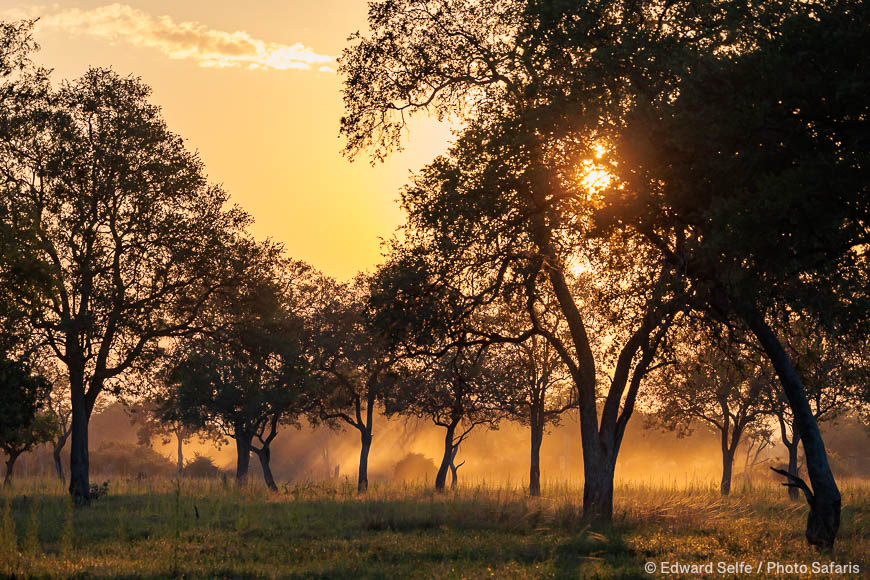
It took a while, so we enjoyed the sunset through the dusty forest, wishing for a subject to appear between the trees.
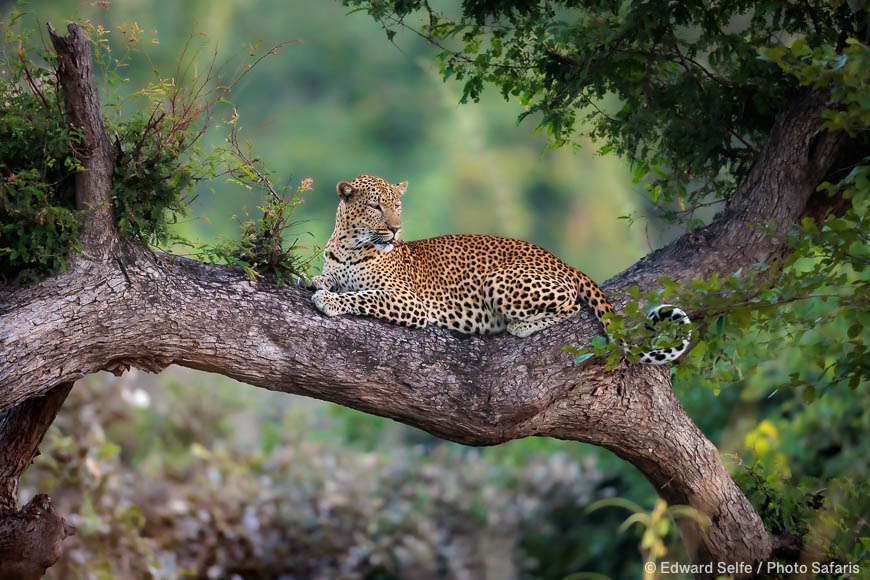
He emerged and lay, spectacular, along the tree.
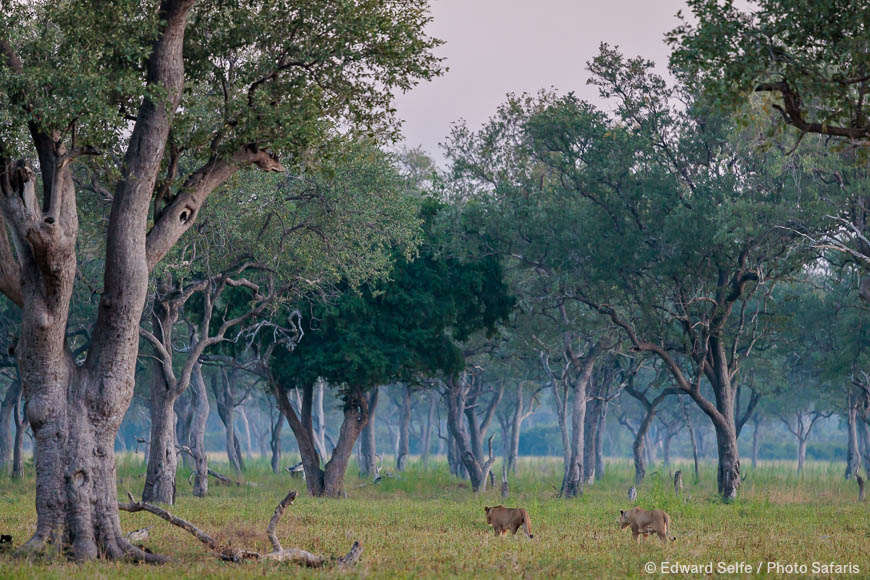
Alarm calls led me to these lions early the following morning. They were heading inland and it would have been a long drive to intercept them so we continued north, hoping for new territory, sightings and wild dogs!
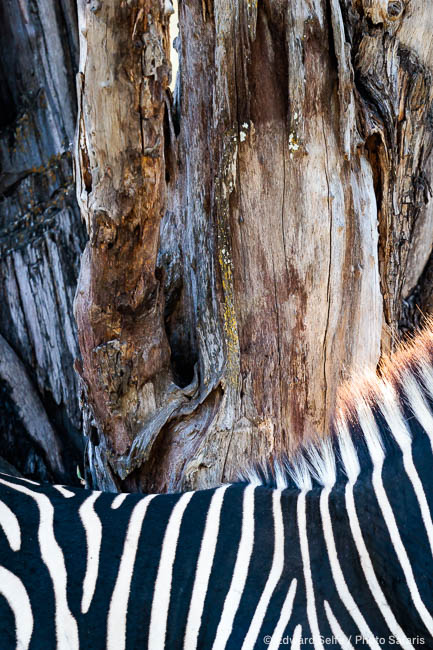
Once again playing with patterns and textures.
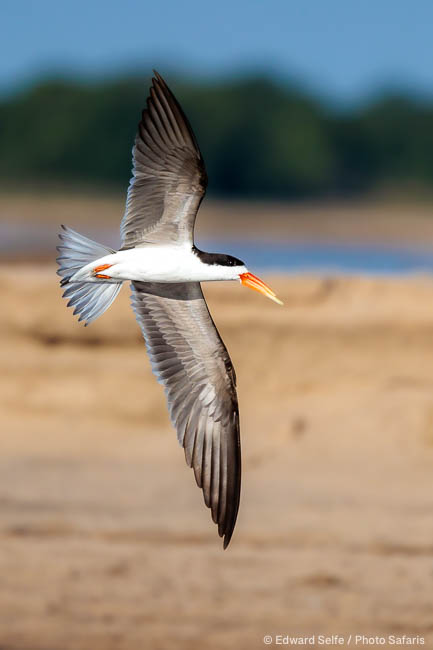
The Skimmers were a very attractive prospect for the early part of the afternoon; action, good light, stunning subject and the possibility of interaction, mating and competition. So we spent another hour with them!!
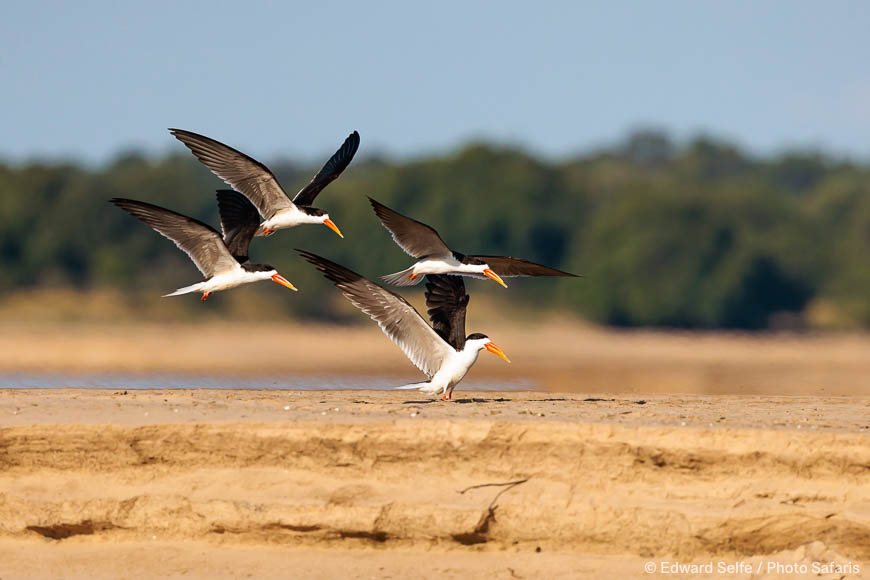
No skimming this time (in fact, I had been surprised to see them skimming the previous afternoon since they normally fish only at dawn and dusk when they are likely to have more success) but more courtship and the chance to learn from the previous day and try new ideas.
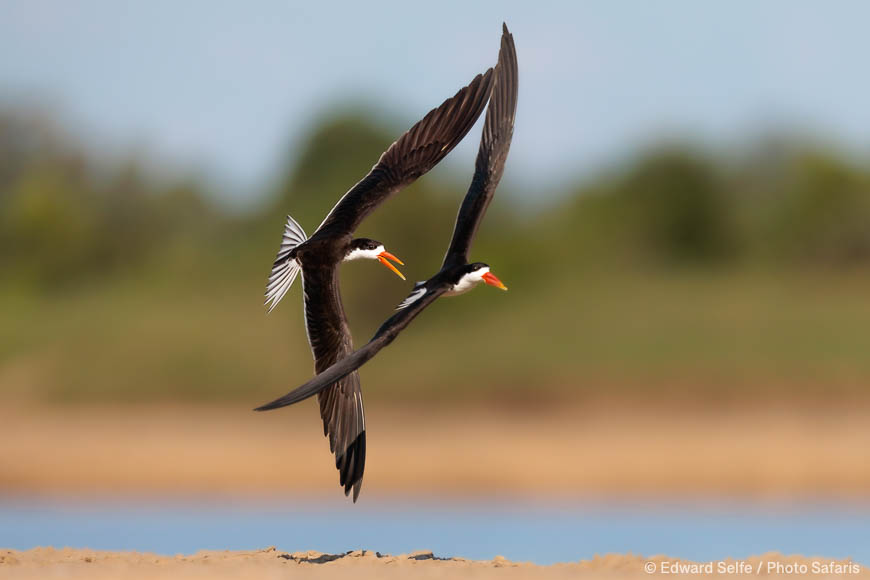
Loved this moment as one chased another.
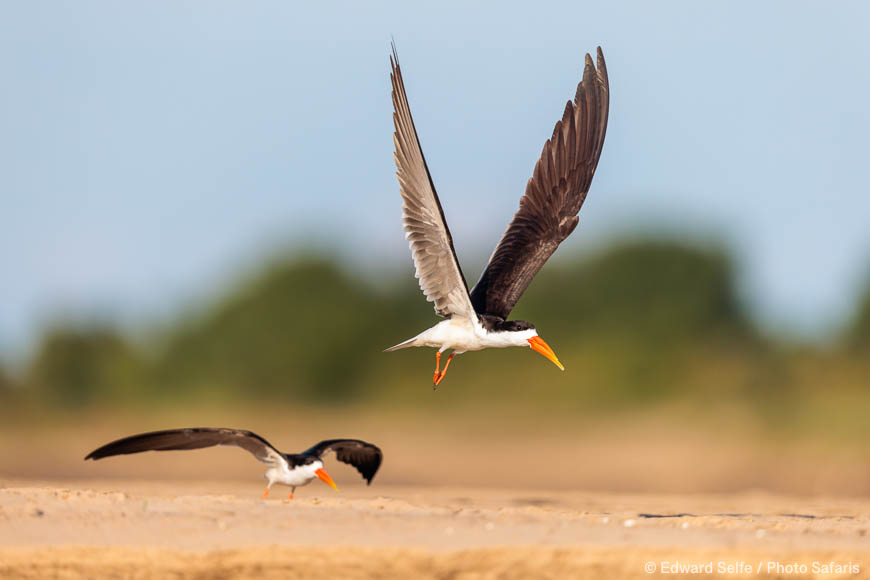
Landing and taking off again….
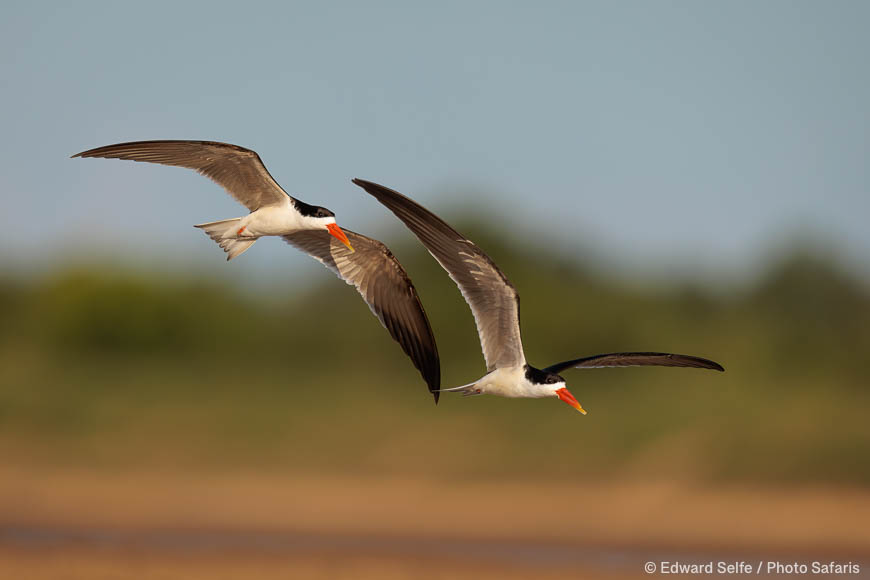
….and finally settling into synchrony.
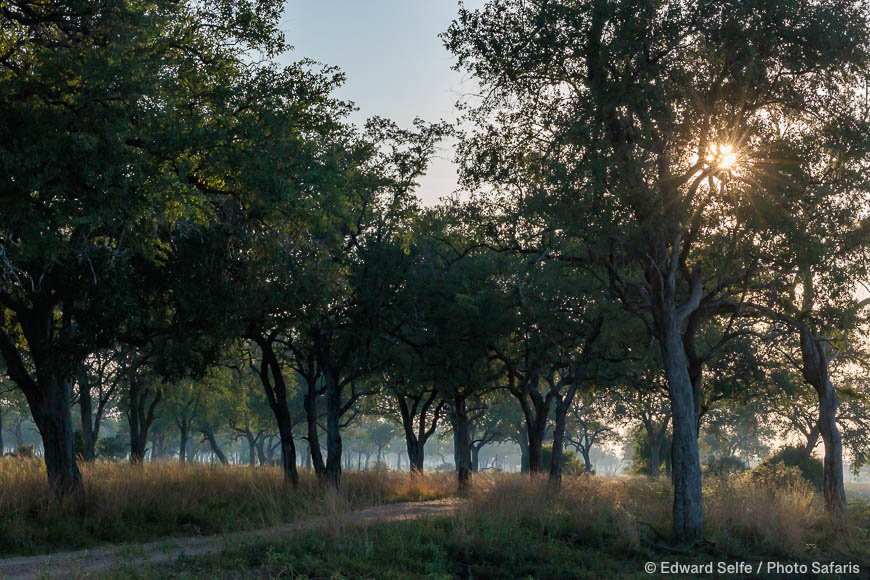
Listening to the bush in the early morning.
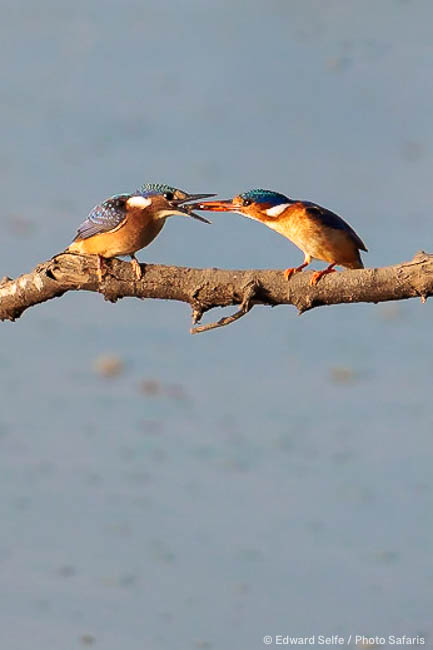
Wonderful moments between adult and young Malachite Kingfisher. We only wished that they were a bit closer since they’re so small!
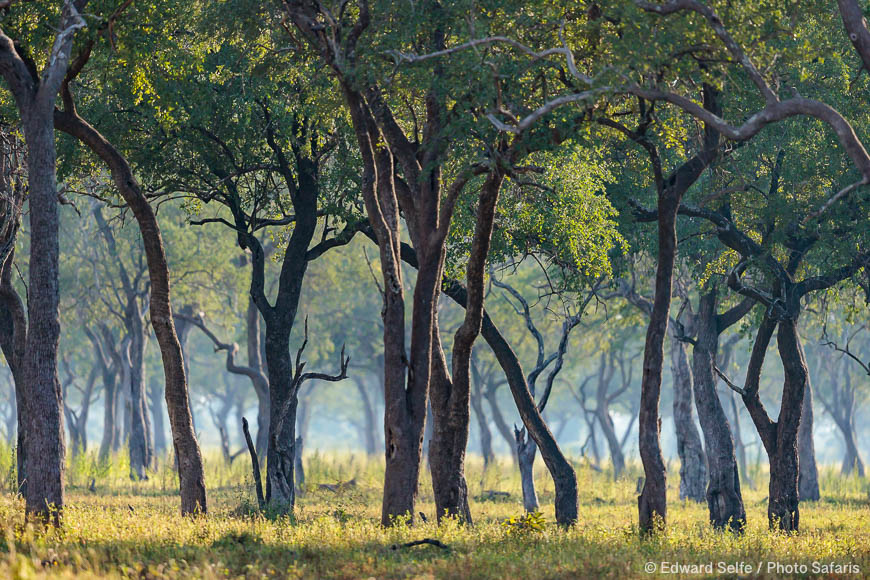
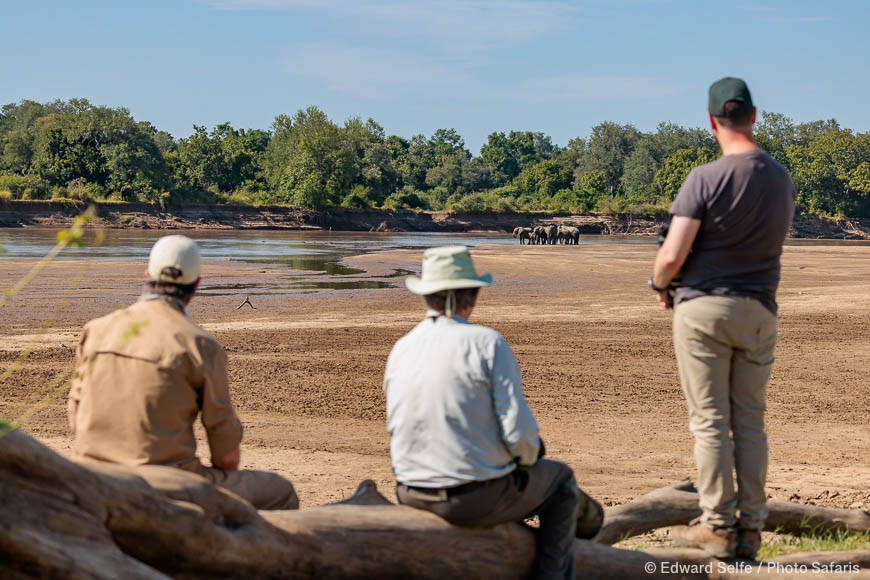
Coffee break in a beautiful spot on the river with elephants on the beach, deciding whether to cross.
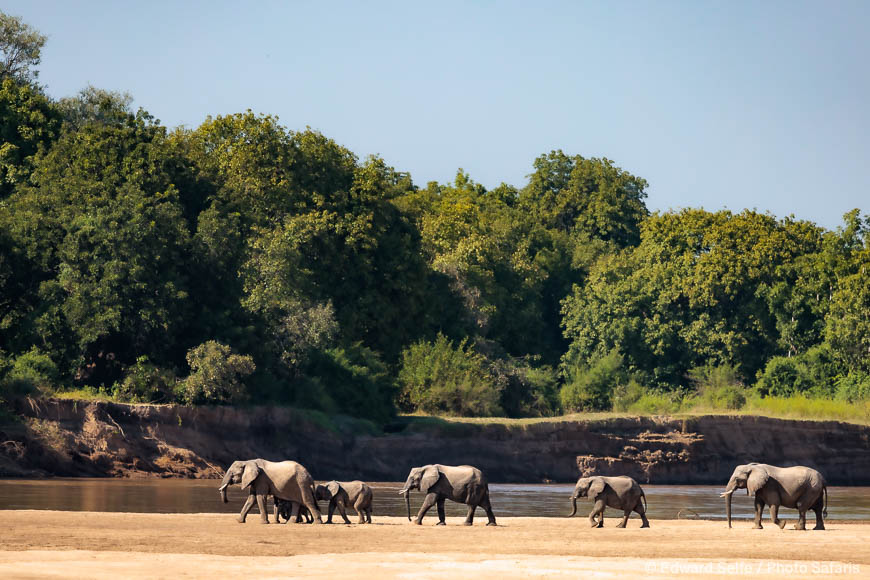
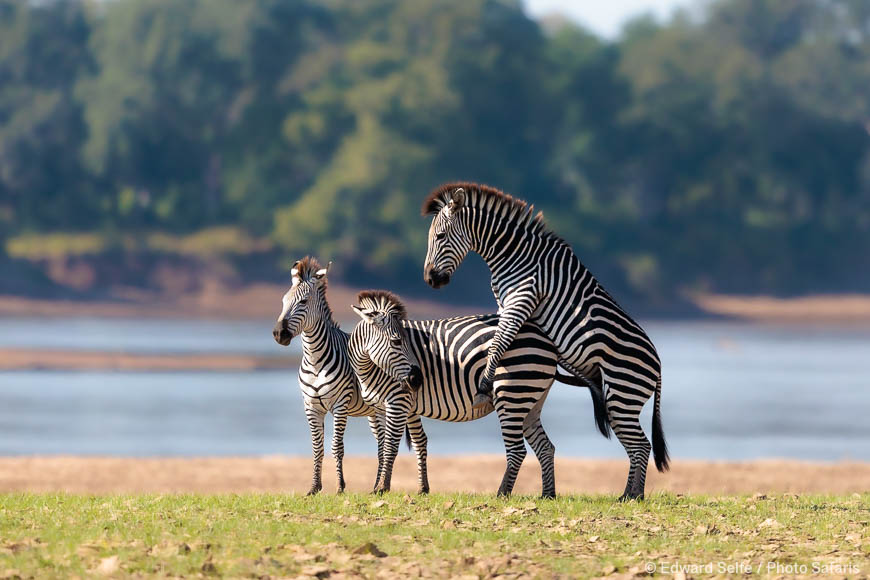
Huge numbers of zebra had congregated in that same area, and it turned out that one mare was in oestrous, which would certainly draw in the crowds.
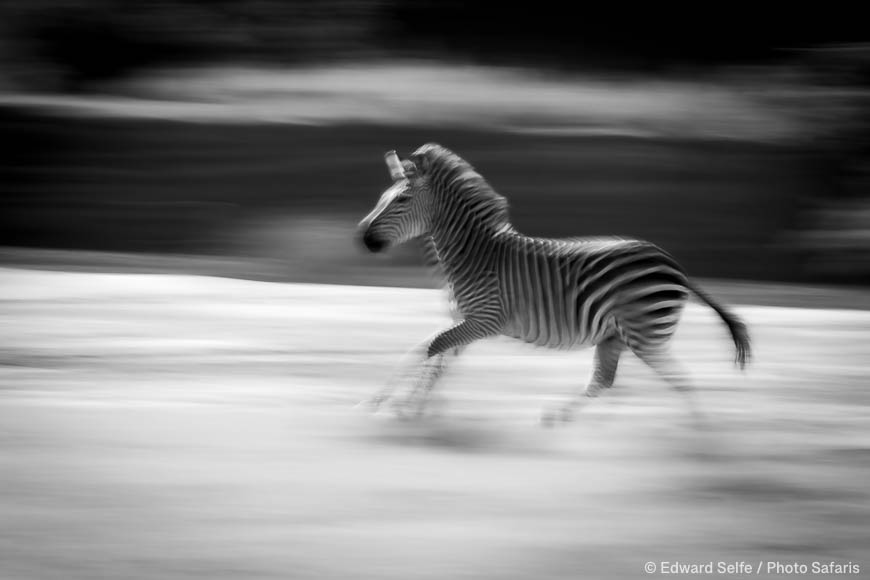
The stallion bachelor groups were chasing the mares and foals around, giving us the chance for motion panning blurs.
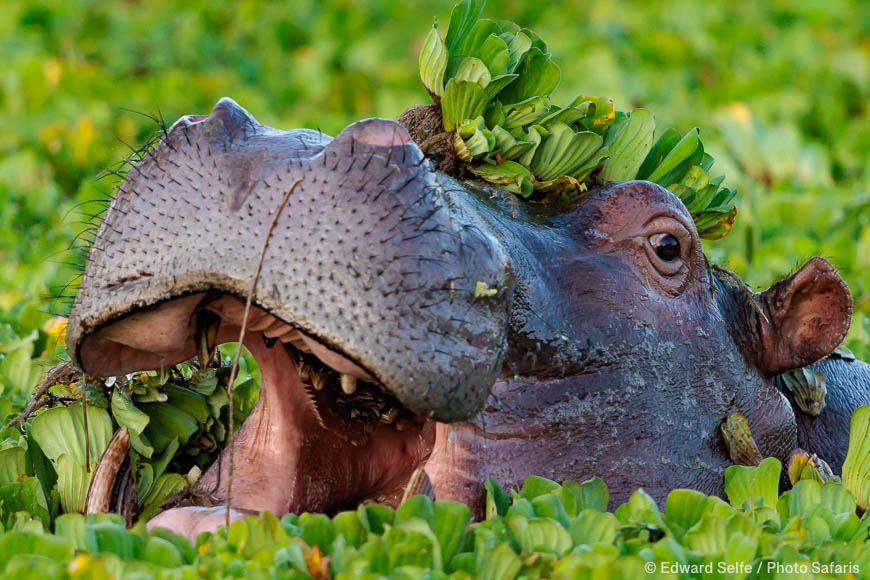
We had seen a lot by this point, and learned a number of new skills. So I took the last couple of days to target certain species or events that we had not covered yet. One was hippos so we headed to a lagoon at sunset to wait for the action. I find that the glow just post-sunset is the best time to shoot hippos; the light is soft, colours are saturated but we avoid the harsh shadows and high contrast that occurs with dark hippos and bright vegetation.
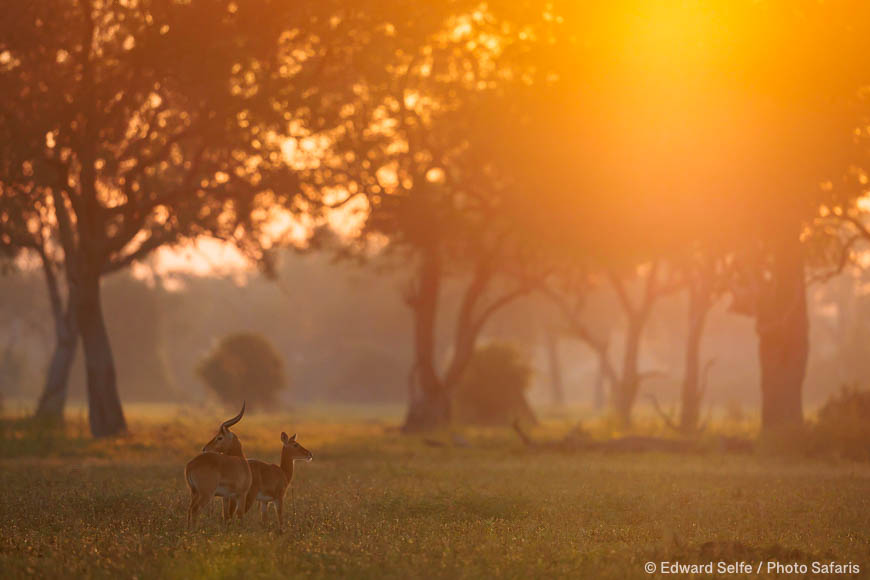
The other main target was wild dogs which had eluded us so far. I watched for any signs of them in the early mornings, but we drew a blank. They were the one species we missed on this tour. But, as I discuss with my guests, photo safaris are about light and action, not about particular species. We endeavour to make beautiful photos out of ordinary situations.
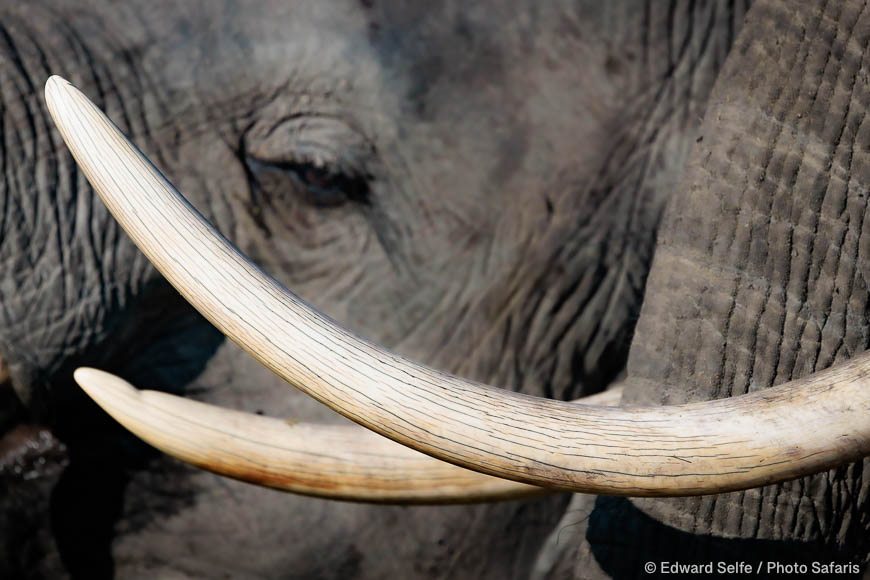
As part of our search for wild dogs, we moved inland to check around a number of inland water sources, hoping that we might stumble across them. No luck, but we did get the chance to spend time with an elephant herd at close quarters. Great opportunities for close-ups.
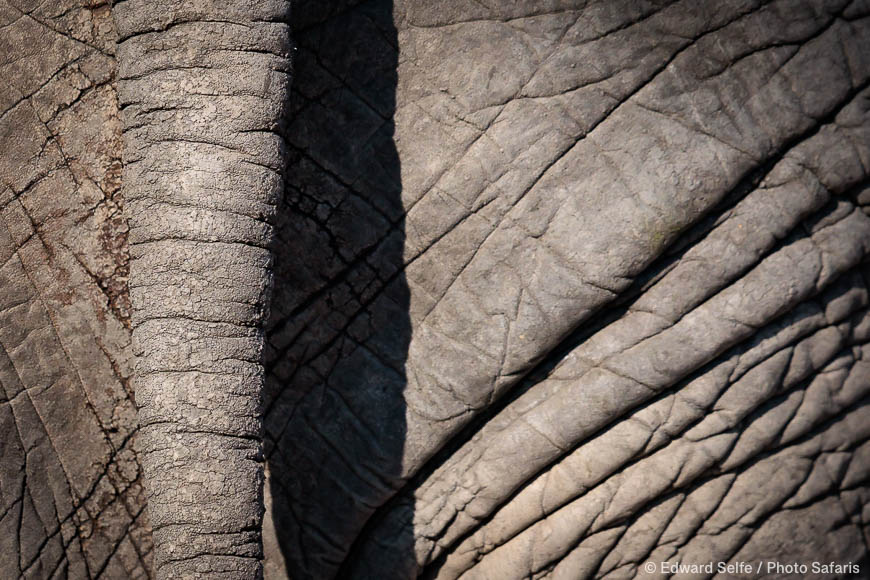
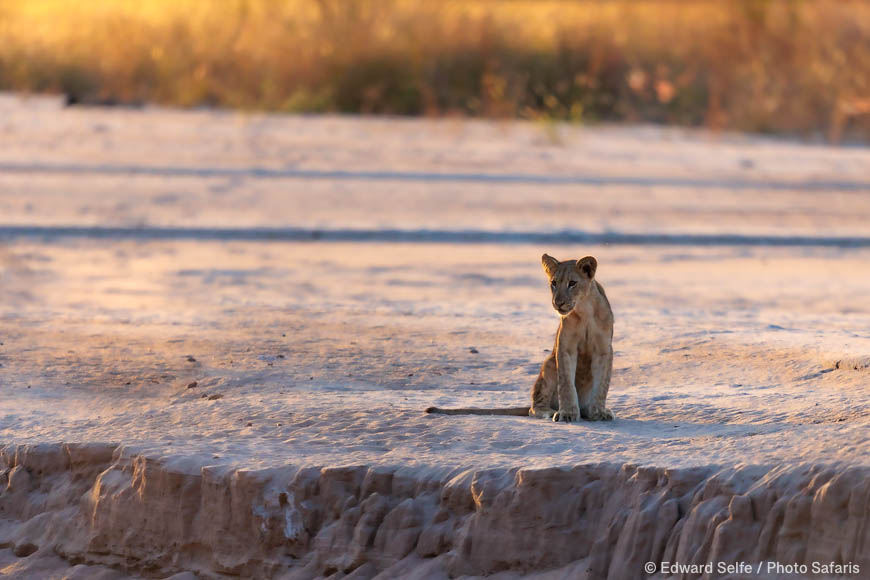
We had also missed the lions cubs so far, so we spent time looking for them on the last day. We followed some intel from one of the other guides and found 4 cubs resting in the shade of a fallen tree in the river bed. We couldn’t see much until they emerged onto the sand at sunset! Fantastic!
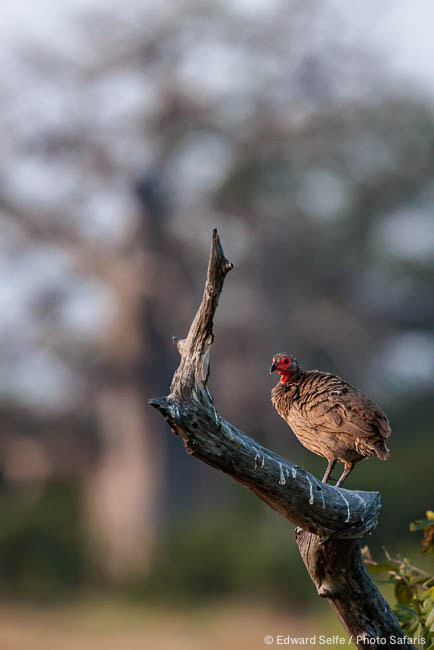
Spurfowl and baobab!
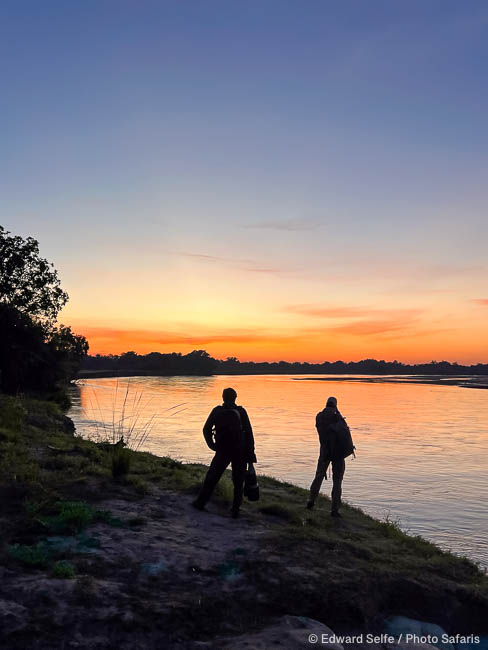
Stewart and Marco soaking up the colours on our last morning.
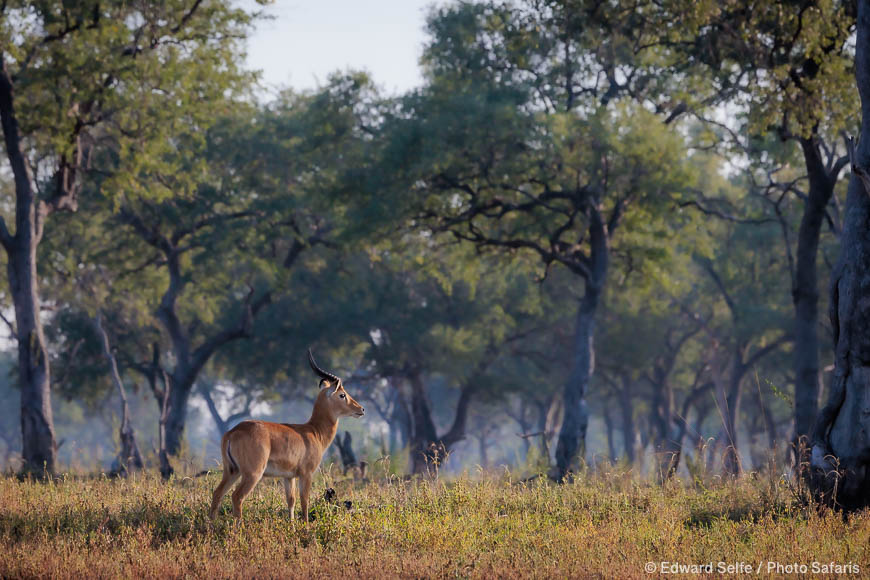
My final target was to get some animals in the leadwood forests close to camp. We waited a while until things lined up and managed to persuade this puku ram to help us out!
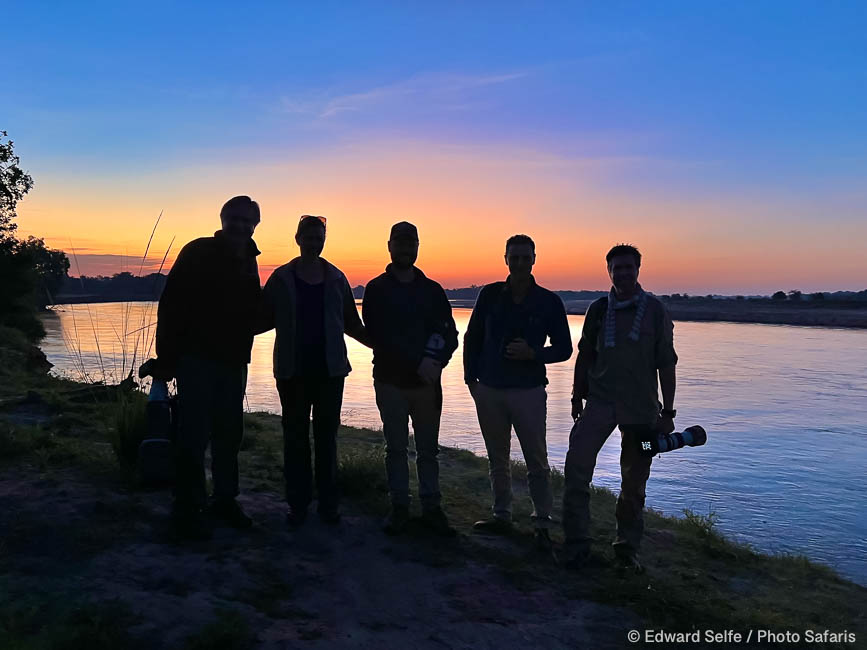
Stewart, Tara, Matt, me and Marco. A great fun group — thank you all for a great 10 days together!
And so ended my Emerald Season safaris for 2023. As I write this, I am on a plane for a tour to Uganda and Ethiopia and, when I return, the Luangwa Valley will not be an Emerald Valley any longer. Dry season is already taking hold and the pans are drying, the grass is wilting and game densities increase daily. See you again soon Luangwa. And thanks to you all for reading to the end.

